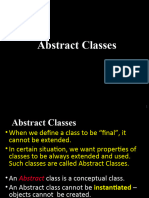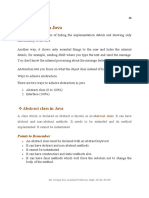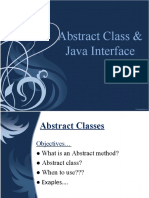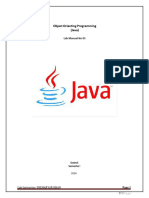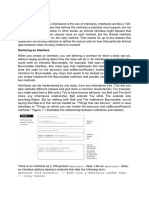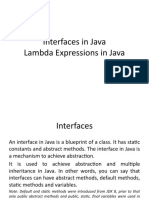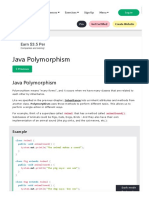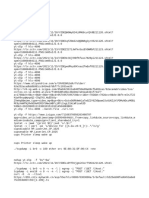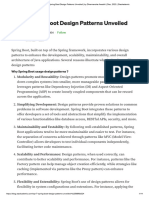0% found this document useful (0 votes)
22 views10 pagesInterface-Abstract Class
The document provides an overview of Object Oriented Programming (OOP) concepts, focusing on abstraction in Java through interfaces and abstract classes. It explains how interfaces achieve full abstraction with only abstract methods, while abstract classes allow for both abstract and concrete methods. Examples illustrate the implementation of interfaces and abstract classes, highlighting their differences and usage in Java programming.
Uploaded by
ajaysir2k6Copyright
© © All Rights Reserved
We take content rights seriously. If you suspect this is your content, claim it here.
Available Formats
Download as PDF, TXT or read online on Scribd
0% found this document useful (0 votes)
22 views10 pagesInterface-Abstract Class
The document provides an overview of Object Oriented Programming (OOP) concepts, focusing on abstraction in Java through interfaces and abstract classes. It explains how interfaces achieve full abstraction with only abstract methods, while abstract classes allow for both abstract and concrete methods. Examples illustrate the implementation of interfaces and abstract classes, highlighting their differences and usage in Java programming.
Uploaded by
ajaysir2k6Copyright
© © All Rights Reserved
We take content rights seriously. If you suspect this is your content, claim it here.
Available Formats
Download as PDF, TXT or read online on Scribd
/ 10


